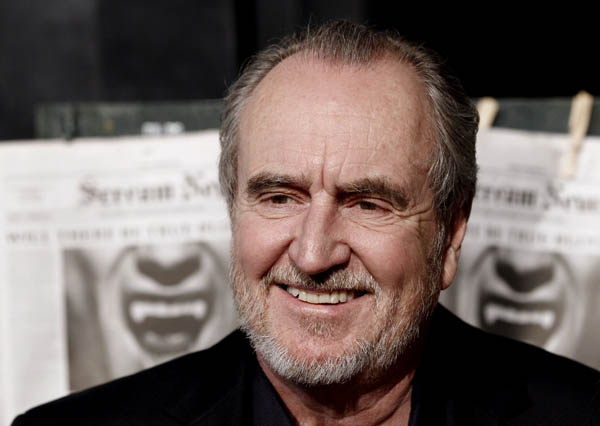Legendary horror director dies

The prolific writer-director, who died Sunday at age 76, ushered in two distinct eras of suburban slashers, first in the 1980s with his iconic “Nightmare on Elm Street’’ and its indelible, razor-fingered villain Freddy Krueger. He did it again in the 1990s with the self-referential “Scream.’’
Both reintroduced the fringe genre to mainstream audiences and spawned successful franchises.
Perhaps it was his perfectly askew interpretation of the medium that resonated with his nail-biting audiences.
“Horror films don’t create fear,’’ Craven said. “They release it.’’
Robert Englund, the actor who brought Freddy Krueger to life, wrote on Twitter that Craven was a “rare species ... brilliant, kind, gentle and very funny man. It’s a sad day on Elm St and everywhere.’’
“Wes will forever be remembered for keeping generations of moviegoers on the edges of their seats, defining and redefining the horror genre with each passing decade,’’ said Directors Guild of America President Paris Barclay.
Craven didn’t solely deal in terror. He also directed the 1999 drama “Music of the Heart,’’ which earned Meryl Streep an Oscar nomination. But his name and his legacy will always be synonymous with horror.
“He was a consummate filmmaker and his body of work will live on forever,’’ said Weinstein Company co-chairman Bob Weinstein, whose Dimension Films produced “Scream.’’
“He was truly an old school director,’’ Craven’s genre contemporary John Carpenter said on Twitter. “Wes was a great friend, fine director and good man.’’
Wesley Earl “Wes’’ Craven was born in Cleveland on Aug. 2, 1939, to a strict Baptist family. He earned a master’s degree in philosophy and writing from Johns Hopkins University and briefly taught as a college professor in Pennsylvania and New York, but his start in movies was in pornography, where he worked under pseudonyms.
Craven’s feature debut under his own name was 1972’s “The Last House on the Left,’’ a horror film inspired by Ingmar Bergman’s “The Virgin Spring,’’ about teenage girls abducted and taken into the woods. Made for just $87,000, the film, though graphic enough to be censored in many countries, was a hit. Roger Ebert said it was “about four times as good as you’d expect.’’
“Nightmare on Elm Street,’’ however, catapulted Craven to far greater renown in 1984. The Ohio-set film is about teenagers, including a then unknown Johnny Depp, who are stalked in their dreams. Craven wrote and directed, starting a franchise that has carried on, most recently with a 2010 remake.
The concept, Craven said, came from his own youth in Cleveland - specifically an Elm Street cemetery and a homeless man that inspired Krueger’s raged look.
Along with John Carpenter’s “Halloween,’’ “Nightmare on Elm Street’’ defined a horror tradition where helpless teenagers are preyed upon by knife-wielding, deformed killers in cruel morality tales. Usually promiscuous girls were the first to go.
The formula would work again for Craven with “Scream,’’ albeit with an added layer of self-aware spoof. By 1996, the Craven-style slasher was a well-known type, even if it wasn’t always made by him. He had no involvement with many of the “Elm Street’’ sequels.
“Scream,’’ written by Kevin Williamson and starring a cast including Drew Barrymore and Neve Campbell, played off of the horror cliches Craven helped create. It hatched three sequels, all of which Craven directed.
He is survived by his wife, producer Iya Labunka, a son, daughter and stepdaughter. AP










with the Korea JoongAng Daily
To write comments, please log in to one of the accounts.
Standards Board Policy (0/250자)